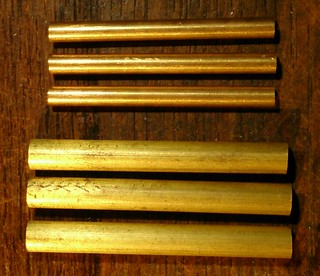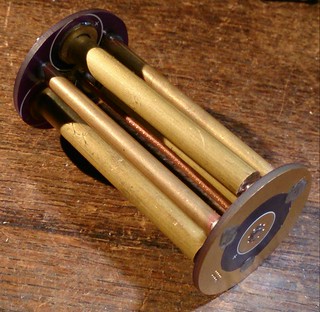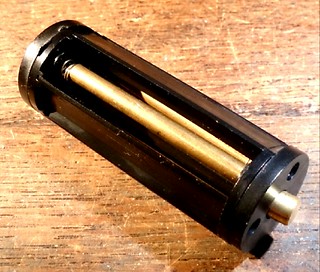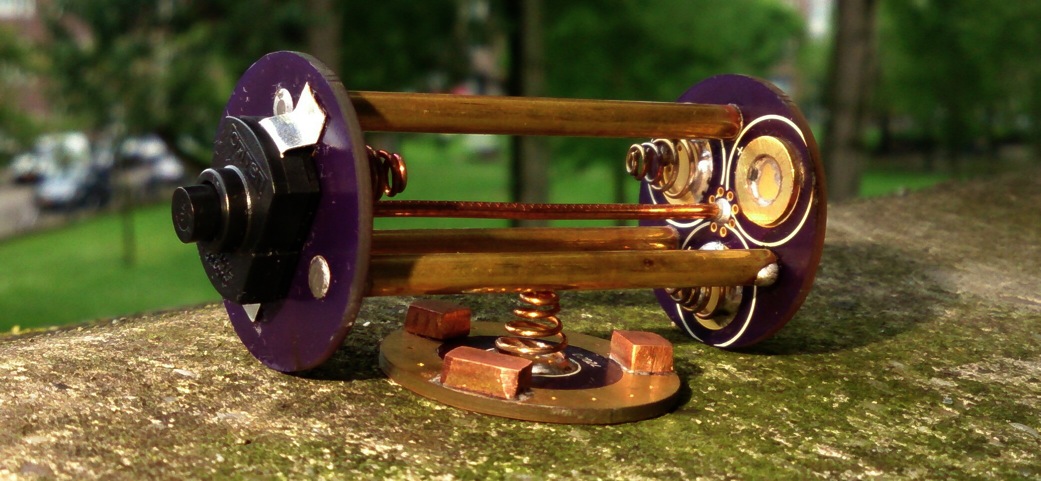
My entry in the OL-fromscratch contest for this year may again not be finished when the deadline arrives, but part of the build is this 3xAA 3S battery holder. I thought that it might be useful to others but me, so here's a post about it. The reason I wanted a 3xAA holder instead of a 4xAA holder is that with 3xAA's (Eneloops) it is suitable for direct driving most used leds, like XML2 and XPG2. In my flashlight build, I will use a direct drive FET-driver. I designed it to be used with a switch fixed on it and the two poles coming out at the top plate, but it can be used without switch as well, and with clever bridging some pads (I'm sure you can work it out ;-) ) the poles can also be made to come out on both sides (no copper wire in the middle) to use the holder as a 32650 battery replacement.
I made the design, sent the board designs to Mataus and after some discussion on improvements, he made the Eagle-files and sent them to Oshpark. Many thanks go to Mataus for his effort on this. This week I had finally some time to build it up. This is the original design I sent to Mataus, the final design is fine-tuned on details but in principle not different:
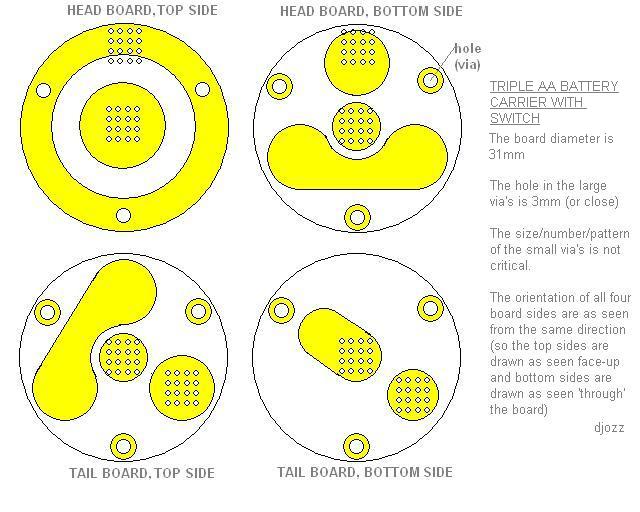
These are the parts I started with, a bottom plate, a top plate, a contact plate that will be fixed inside the flashlight (Mataus put my BLF-name on it, so if you use it you will have to bare with that ;-) ), some copper alloy springs from Fasttech, messing rings, an Omten switch and some 4mm brass bar.
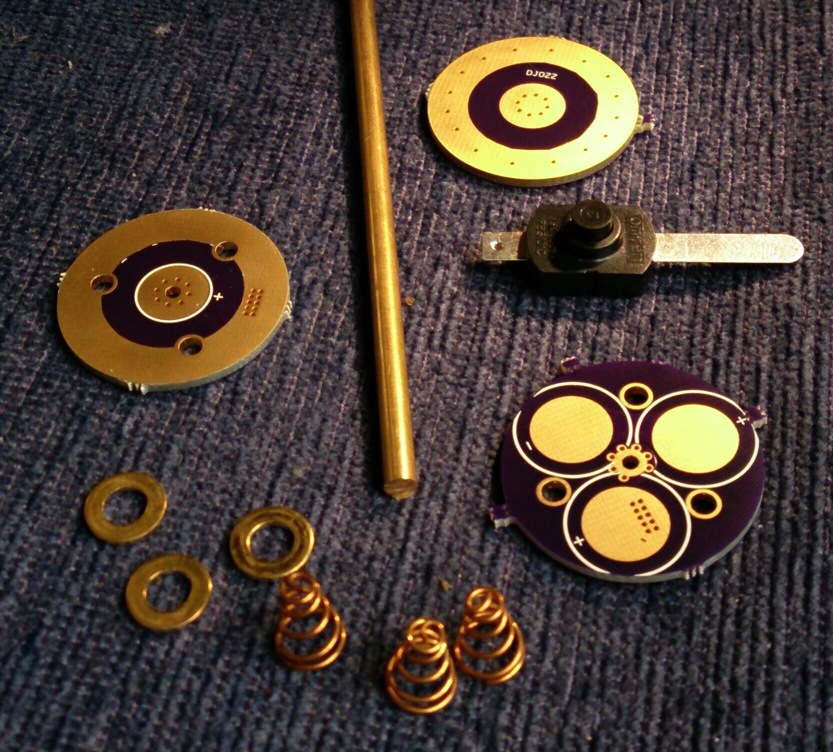
First thing to do was to solder the springs on the negative poles, and the brass rings (I reamed the holes a bit to fit the average battery plus-button) on the positive poles (the rings are not really necessary, but they keep the batteries in position a bit better). Then cut three brass pillars to size (I chose 54mm distance between the top and bottom plate), the design was made to solder the pillars into the 3mm holes, so the end of the pillard had to be narrowed down to 3mm. I used my drill press and a small file for that, it took a while, but that was mainly because of the poor quality of the file :-( :
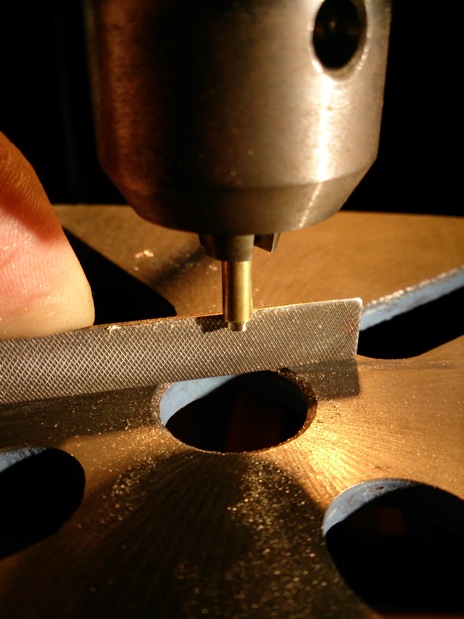
I guess that you can also use pillars with M3 (3mm) screw holes and use screws to fix the pillars, but you may have to use a smaller switch than I did to make room for the screw heads (there is a very decent small Omten switch that should do the job).
I soldered the pillars first from the inside, the assembly clamped lightly in a vice, using a small butane torch to heat the brass, I was careful not to make it too hot and burn the circuit boards:

With the pillars fixed in place I could take out the holder and solder the pillars from the outside of the boards as well. At last a copper wire (I stripped some common installation wire) was soldered in the center (using a solder iron) to guide the positive pole back to the top board. Here's how it came out:
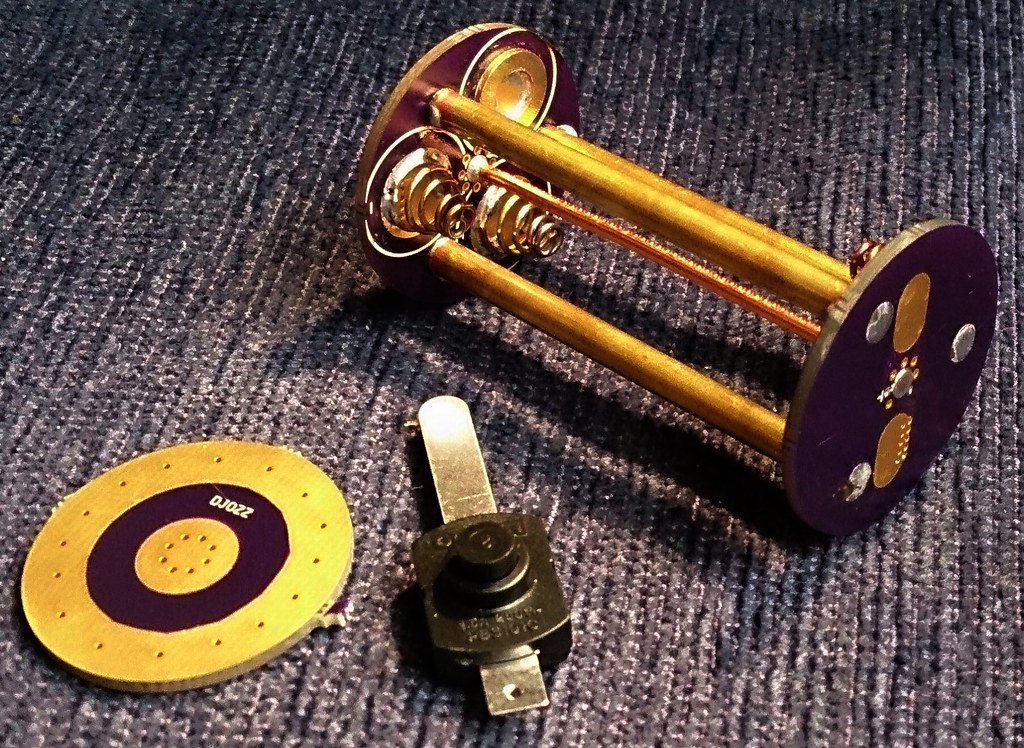
It felt really nice and stiff now, like a real high end battery carrier :-)
Now the switch was soldered and the contact plate was build up with a spring and some small copper blocks, and the work was done:

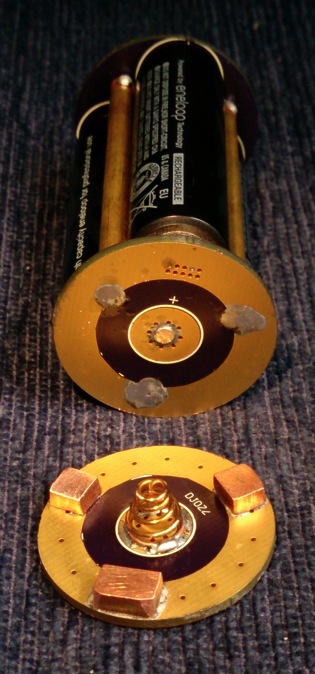
I have not done extensive testing on the performance, but the resistances in this holder should be pretty low by design.
What I did do was test it on the head of my SWM D40A flashlight. Stock it has a 4xAA in series battery holder, putting out 980 lm on turbo, with this 3xAA in series holder I get 840 lm on Turbo (slowly decreasing, indicating that the voltage sag of the batteries is the limiting factor when using the lower voltage of one battery less than normal), which I think is pretty good, and a sign that the resistance is very ok. On high, the battery holder has no problem at all to keep the output at the normal 570lm for at least a while.
EDIT: in post #7 I connected this carrier with Eneloops to a XM-L2 led and measured voltage and current through the led.
Perhaps this may be useful for someone, here are the Oshpark links for the plates:
http://oshpark.com/shared_projects/3A1aMPND
http://oshpark.com/shared_projects/DgMeIHsa
http://oshpark.com/shared_projects/2T8aR4dR
It is pretty expensive to order the three of them ($16.50) but you get three of each, for three holders.
If anyone has smart ideas how to improve the design, to make it more versatile, or make it do things it can not do now, be free to post about it here, perhaps Mataus is willing to implement it?
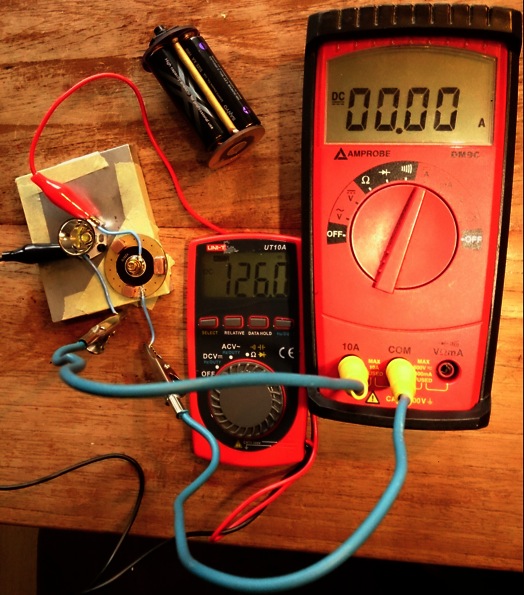
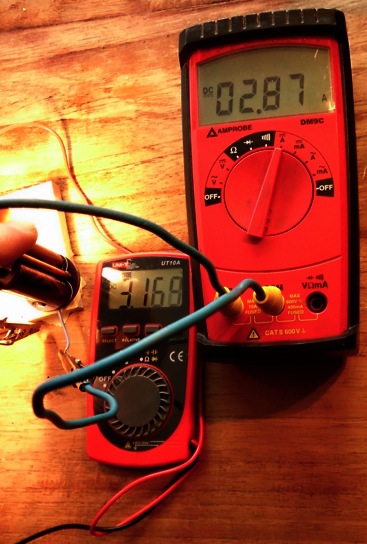 5 minutes later:
5 minutes later: 

